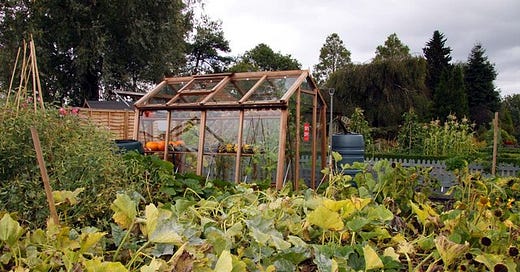I am in a book club, and when it’s my turn to choose a book I bully my friends into reading about ecology. This month I chose Second Nature: A Gardener’s Education by Michael Pollan.
Better known for The Omnivore’s Dilemma and The Botany of Desire, Michael Pollan is an author, journalist, and professor who writes about the intersection of nature, food, and culture. In this book, he chronicles his journey with gardening, and the many ecological and cultural lessons he learns along the way.
I found Second Nature to be an intriguing book. It was funny, informative, profound, frustrating, nostalgic, embarrassing, sweet, and earnest all within a mere 258 pages. I took it with me on two whitewater rafting trips and it was the perfect beach (sandbar?) read.
The theme of Second Nature is that of ecology vs. culture. Almost every chapter explores a different way in which humans exist with or in opposition to nature, always through the lens of gardening.
Pollan grew up visiting his grandfather’s garden, where nature was viewed as a way to profit. “Eating beefsteaks was one pleasure, but calculating their market value and giving them away was even better… To work in his garden was to commune with nature without ever leaving the marketplace,” he writes.
His grandfather’s garden was an instrument of capitalism, a 1950s side hustle, but it still impressed upon Pollan the magic of gardening and fostered a lifelong curiosity for the land.
As an adult, Pollan’s relationship to gardening centers around ecology, not finances. His garden is a classroom, a place to learn about himself and his environment.
One of the recurring themes in Second Nature is how U.S. culture is reflected in its attitudes toward gardening. While Pollan struggles to decide how he wants to landscape his front yard, he discusses how the unbroken suburban sprawl of lawn is actually a rejection of English hedges and fences. Americans “…sought to elevate an unassuming patch of turfgrass into an institution of democracy; those who would dissent from their plans were branded as ‘selfish,’ ‘unneighborly,’ ‘unchristian,’ and ‘undemocratic.’” Lawns were a middle finger to English ideas of propriety.
I had never considered how politics shape landscaping, I always assumed it was personal preference. But it was fascinating to consider how the cultural attitudes of a nation shape the way we engage with our environment, even down to the flowers we choose to plant.
Another major theme is that of humans’ place in nature. Are we fighting nature? Altering it? Part of it? Does nature as we’ve defined it actually exist?
Sometimes, nature is Pollan’s adversary. When battling garden pests, he writes, “But my fury at the woodchuck put me in touch with a few of our darker attitudes toward nature: the way her intransigence can make us crazy, and how willing we are to poison her in the single-minded pursuit of some short-term objective.”
Other times, nature itself is a garden. Pollan discusses the need for active ecological restoration in Yellowstone National Park, saying: “If the goal is to restore Yellowstone to its pre-Columbian condition, their policy may well have to include the setting of fires. They will also have to decide how many tourists Yellowstone can support, whether wolves should be reintroduced to keep the elk population from exploding… Today, even Yellowstone must be ‘gardened.’”
In the end, he rejects the romantic definition of nature as an untouched wilderness, spoiled only by human hands. Pollan embraces nature as a relationship between the land and its inhabitants, and a garden as a kind of “second nature” – a nature we’ve created.
As an ecologist, I found these perspectives interesting. In some ways they mirror current academic attitudes about nature. In classes, we often talked about human beings as a part of nature, a keystone species. Yes, we have the capacity for great destruction, but humans have also lived harmoniously with the land for thousands of years before industrialization.
But I also felt there was a huge piece missing from Second Nature. Other than a few convenient examples, Pollan fails to discuss Indigenous relationships with nature.
Maybe this is a product of it being written in 1991, but I think it’s careless to write a book about humans and nature without acknowledging Indigenous practices. Many of the best examples of sustainable living and agriculture come from Indigenous traditions. I think that’s what Pollan’s “second nature” actually is – not a suburban vegetable garden.
Because of this, I found myself alternating between frustrated disapproval and enthusiastic agreement. I was impressed by some of his ideas while I cringed at others.
It gave me a lot to think about. I learned more than I ever thought I would about gardening and I had the chance to dissect my own views on ecology. I also laughed a lot and appreciated Pollan’s rich prose and considered what it would be like to put a seed into the ground and pull out a fully formed carrot.
If you want, Second Nature can just be a lovely book about gardening. But if you’re willing to dive deeper, it can be a part of a greater conversation about ecology, people, and the relationship between ourselves and nature.



